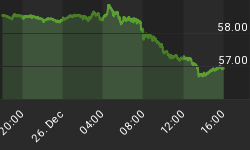Investor's Business Daily reports Jobs, Income Data Show Right-To-Work States Working
The business world is abuzz over the National Labor Relations Board's complaint vs. Boeing's new South Carolina production line. For NLRB critics, the case boils down to one thing: "right-to-work" laws.
Right-to-work states have generally lower unemployment, higher job growth, lower taxes and better business climates. They have growing populations and have been attracting businesses from other states.
In most states, once a workplace is unionized, employees are required to join the union or they can't work there. But 22 states, including South Carolina, have passed laws that give employees the right not to join. Hence the term "right-to-work."
Between 1977-08, employment grew 100% in right-to-work states vs. the national average of 71% and 56.5% in non-right-to-work states. That's according to a January study that Ohio University economics professor Richard Vedder did for the Indiana Chamber of Commerce.
In this period, real per capita income in the right-to-work states grew 62.3% vs. the national average of 54.7% and 52.8% for non-right-to-work states.
Vedder has studied right-to-work laws for decades and argues that this success is not a coincidence.
" I've been looking for ways to show that these laws don't really (impact) anything. But I haven't found it yet," Vedder said.
Right-to-work fans concede that a variety of factors go into the relative success of a state's economy. But the labor laws are a strong indicator, they argue.
"Nobody is saying that right-to-work is the only factor, but if the bottom 14 states for personal income growth (between 1999 and 2009) are all non-right-to- work states, that's a pretty strong negative correlation," said Stan Greer, senior research associate for National Right to Work's National Institute for Labor Relations Research.

I support national right-to-work laws for the simple reason it is the right thing to do. Forcing people to belong to unions to get a job is forced slavery. Dictating what people can and cannot do with their free time is also slavery.
Sadly, unions even dictate what non-union members can do with their free time.
Want to donate time to your school, cleaning classroom or planting shrubs? It's likely you can't because of unions. Want to be a volunteer fire-fighter? You may not be able to do that either.
For further discussion of the slavery issue, please see
















